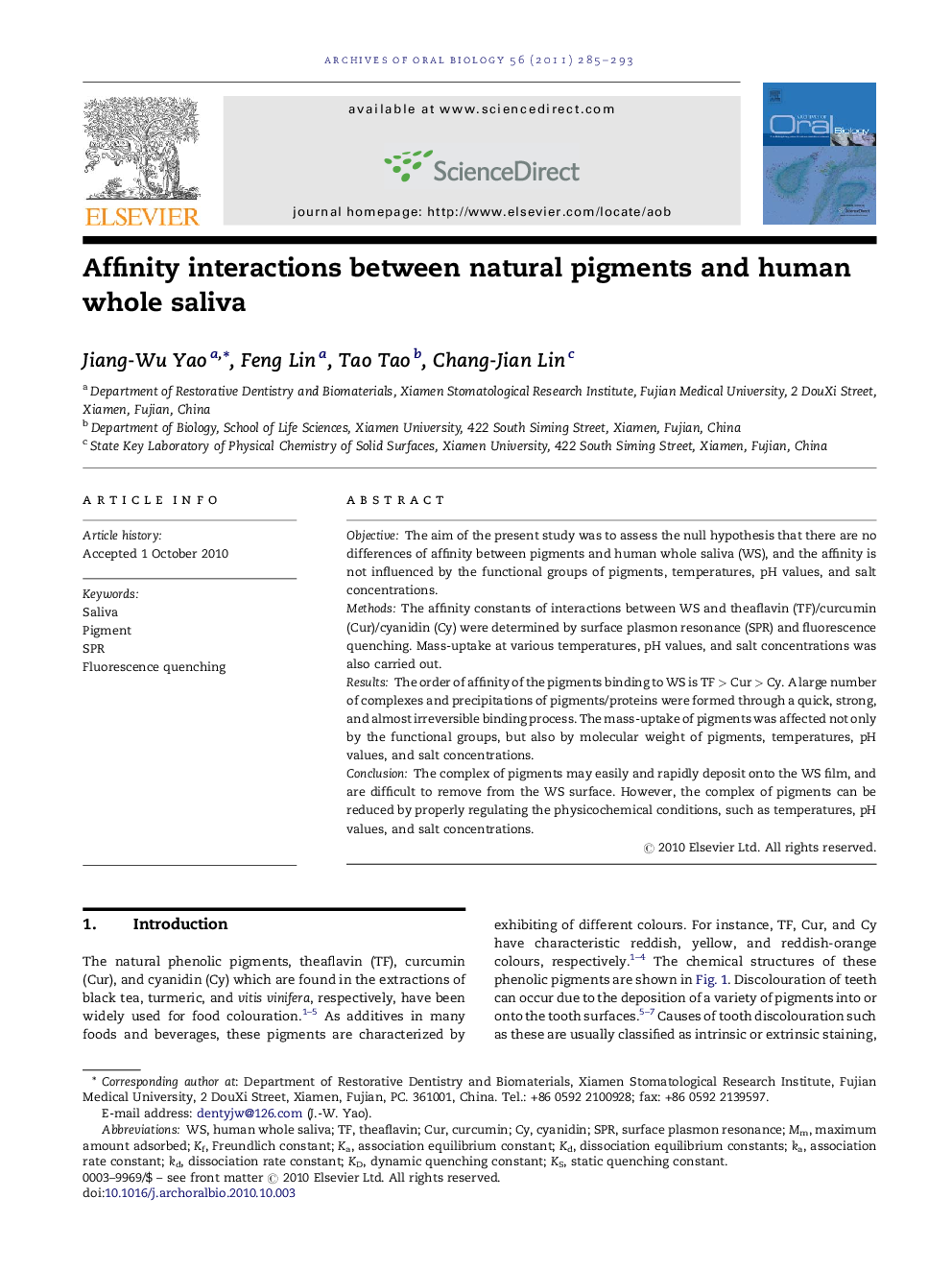| Article ID | Journal | Published Year | Pages | File Type |
|---|---|---|---|---|
| 3121017 | Archives of Oral Biology | 2011 | 9 Pages |
ObjectiveThe aim of the present study was to assess the null hypothesis that there are no differences of affinity between pigments and human whole saliva (WS), and the affinity is not influenced by the functional groups of pigments, temperatures, pH values, and salt concentrations.MethodsThe affinity constants of interactions between WS and theaflavin (TF)/curcumin (Cur)/cyanidin (Cy) were determined by surface plasmon resonance (SPR) and fluorescence quenching. Mass-uptake at various temperatures, pH values, and salt concentrations was also carried out.ResultsThe order of affinity of the pigments binding to WS is TF > Cur > Cy. A large number of complexes and precipitations of pigments/proteins were formed through a quick, strong, and almost irreversible binding process. The mass-uptake of pigments was affected not only by the functional groups, but also by molecular weight of pigments, temperatures, pH values, and salt concentrations.ConclusionThe complex of pigments may easily and rapidly deposit onto the WS film, and are difficult to remove from the WS surface. However, the complex of pigments can be reduced by properly regulating the physicochemical conditions, such as temperatures, pH values, and salt concentrations.
